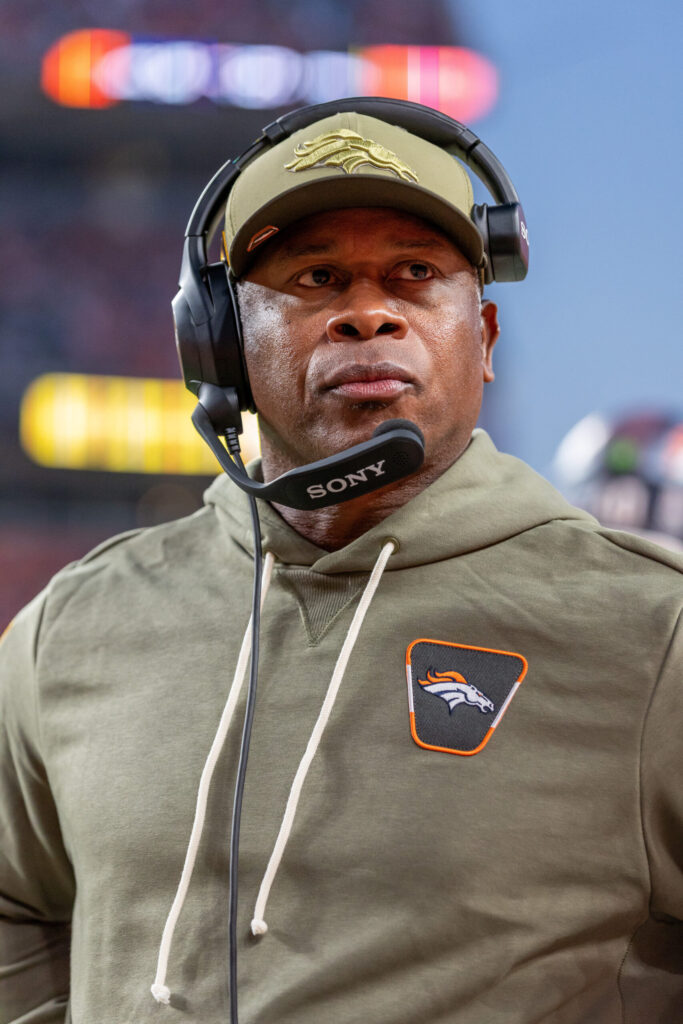Glenwood Springs’ rivers are the lifeblood and harbinger | Colorado River Towns
Denizens of Glenwood Springs, the small Western Slope city that hugs the two rivers that meet about a mile west of its world-famous hot springs, are acutely attuned to the health of the Colorado and the Roaring Fork rivers.
The city asked residents in late June to restrict nonessential water use, citing “water supply issues” as heavy rains drove sediment into the creeks that spill into the Colorado River and provide water for Glenwood Springs.
That same day, an afternoon cloudburst spawned a mudslide that buried the highway east of town under 6 feet of mud and debris. Workers cleared the road that night, but more rain came the next day, leaving the road impassable, this time for two days.

Glenwood Springs Fire Department Glenwood Springs Fire Department A mudslide covers Interstate 70 in Glenwood Canyon in June.
The highway department would close the canyon another dozen times over the next month and a half, for periods ranging from a couple hours to 15 days, after downpours over the scars from last summer’s Grizzly Creek fire created a slide that broke parts of the highway, snarling the high country for hundreds of miles each direction.
When the rains above Glenwood Canyon threatened to stymie traffic, they also messed with the city’s drinking water, leading to regular advisories to limit outdoor watering or shut down all but essential use. In addition, due to steady mudslide and flash-flood dangers, the Colorado Department of Transportation has closed popular river rafting launch sites in the canyon, crimping one of the area’s favorite summer activities.
In early July, citing low flow and high water temperatures, Colorado Parks and Wildlife asked anglers to avoid fishing on the Colorado River along a stretch that includes Glenwood Springs, and later that month added a request to lay off the fish during the afternoon along the 25 miles of the lower Roaring Fork River, which terminates in downtown Glenwood Springs. The high temperatures prevent oxygen from dissolving in the water, which is also cloudier from sediment in spots, stressing and endangering the fish.
It’s been that kind of summer.
The beat of the river
If Glenwood Springs had a heartbeat, it would sound like burbling and splashing, layered over the low rumble and relentless, steady flow of the rivers. World famous for more than 100 years for the resort built around its geothermal spring, the city earns its “Land of Water” nickname as much from the two major rivers whose confluence lies at its heart.
“We are a community, really, of the Colorado and Roaring Fork rivers. It provides us with our recreation, our rafting, our fly fishing — so much for our tourism — and it’s a great amenity. I use it myself,” said Glenwood Springs Mayor Jonathan Godes during an online seminar to discuss how the city can respond to last year’s Grizzly Creek fire above Glenwood Canyon.
The fire, said Carol Ekarius, a civil engineer and CEO of COCO, a nonprofit that helps communities respond to the long-term changes wrought by wildfires, can affect everything from the town’s municipal water supply to recreational activities that draw more than 1 million tourists every year.

Christian Murdock, The Gazette Visitors walk through the courtyard into the lobby of the Hotel Colorado in Glenwood Springs. The historic hotel opened in 1893.
A vacation destination since its founding — unlike most Colorado settlements, built around mining, agriculture or the railroad — Glenwood Springs remains a four-seasons playground. The city depends on the health of the rivers to sustain its economy and the idyllic quality of life enjoyed by its 9,963 year-round residents.
The city regularly lands on national lists of the best small towns in America. Originally known as Defiance, Glenwood Springs was founded in 1882 and named for a town in Iowa. The railroad arrived just three years later, transporting tourists to the hot springs and luxurious Colorado Hotel, where notorious gunslingers and gangsters hung their hats. Old West legend Doc Holliday retreated there to nurse a case of tuberculosis but died in town in 1887, and Chicago mobster Al Capone favored retreats at the spa.
In 1905, President Theodore Roosevelt put the town on the international map when he used it as a base camp for a six-week hunting expedition and considered establishing a Western White House there. His exploits on the trip included brokering a peace deal in the Russo-Japanese War, winning him the Nobel Peace Prize, and an encounter with a bear cub that led to the creation of the teddy bear.
Big, hot springs
In addition to boasting the world’s largest hot springs pool — fueled by the Yampah hot spring and the 3.5 million gallons of 122-degree, mineral-rich water it produces daily — the 133-year-old Glenwood Hot Springs Resort tips a hat to the river that flows nearby. The resort’s newest feature includes Shoshone Chutes, a river ride “that twists and turns, banks and swooshes, mimicking the thrill of a Colorado whitewater experience.”

Bathers relax in the warm water next to the Hotel Colorado in Glenwood Springs in October 2020. Christian Murdock/The Gazette
The $125 million Grand Avenue Bridge Project ferries vehicles and pedestrians from Glenwood’s historic downtown and the train station to the hot springs, with a foot bridge that offers views that follow the river up the canyon and west toward New Castle, Rifle and Utah. Completed in 2018, it’s touted as the largest public works project on the Western Slope in the previous quarter century.
The city does its part, too, to maintain the rivers’ health. The Colorado River Conservation District, an 84-year-old regional entity with a staff of 22 established to protect and advocate for the mighty river and its resources, is headquartered in Glenwood Springs.
A municipal river commission helps maintain appropriate, riparian planting along the banks of the rivers and every summer sponsors RiverFEST at Two Rivers Park, just downstream from the Colorado and Roaring Fork’s confluence, to celebrate the rivers and clean up their banks. Raftoberfest, sponsored in August by White Water Rafting LLC, takes the celebration up a notch.
“For Glenwood Springs, not only is it drinking water, but we have an entire industry in town that’s built around healthy rivers — fishing, the rafting industry that is just huge,” said Karl Hanlon, a water attorney and Glenwood Springs’ city attorney. “Healthy rivers are absolutely a big driver both socially and culturally and economically for Glenwood.”

Visitors take the stairs up to the Grand Avenue Bridge from historic downtown Glenwood Springs. (Christian Murdock, The Gazette)
“You can raft on the Colorado all throughout the season,” he added. “It’s unique in the state that you can be on it in into the winter. It’s such a big part of the community. Everyone likes to spend time on the water.”
Wildfire, wilderness water
Glenwood Springs gets its drinking water from Grizzly Creek and No Name Creek as they spill from the Flattop Wilderness Area north of Glenwood Canyon toward the Colorado River below, via a system of tunnels and a 24-inch line that picks up the flow above the highway, delivering the water to the municipal treatment plant. When the rain falls on top of the burn scar, it washes mud and debris that isn’t anchored by vegetation into the creeks, sending the turbidity level so high the plant can’t treat it.
Turbidity, a measure of the cloudiness caused by tiny particles in the water, is measured in nephelometric turbidity units, typically between 5-10 TPU, but after this summer’s flash floods, Hanlon noted, it’s often registering above 500 TPU and has reached 5,000 TPU. When it’s that high, the city shuts off its water source from the canyon and draws water from the Roaring Fork River, but when it rains, that can be too turbid, too.
The city got a $90 million loan from the Colorado Water Conservation Board last year after the fire, enabling new filters and sediment pads near the source of the water and additional sediment tanks at the treatment facility.
Dave Kanzer, deputy chief engineer of the Colorado River Water Conservation District, said the warming climate is stressing the river from every direction.
“The Colorado River’s average annual flow has declined by nearly 20% compared to the last century, and researchers have identified one of the main culprits — climate change is causing mountain snowpack to disappear,” he said during the online presentation.
“It’s tough to mitigate except for reduction in greenhouse gases, but now we’re trying to adapt to a changing world, and that world is wildfires,” he said. “Since 2002, we have all of the top 20 fires in Colorado history, and 2002 marks the beginning of the drought period we are living through.”
Reenergizing the flow
Two years ago, Glenwood Springs became the second Colorado city — and the seventh city in the country — to source its electricity entirely from renewable sources, buying its electrons primarily from a Nebraska utility powered by wind.
Hanlon said everyone with a stake in the city is “acutely aware” of the impacts of climate change.
“In so many ways, northwest Colorado is on the front lines of climate change — from severe drought and transitioning economies to these kind of events in Glenwood Canyon.
“It’s a conversation we’re having in every community, about resiliency. What does the water system look like? How do we move forward on everything from water plants to sewer plants to the roads you might need to wildfire preparation? All of that is coming into clear focus.”

Christian Murdock Eastbound traffic on Interstate 70 drives through the canyon east of Glenwood Springs Monday, Aug. 8, 2016, near the Hanging Lake rest stop.
For the foreseeable future, Ekarius, the wildfire recovery expert, stressed, “This is a marathon,” with “impacts that can last for years or decades.” She said the roughly four-mile stretch of Colorado River that rolls through town will reflect the wildfire’s scar as it slowly heals.
“When we talk about post-fire flooding, it is not a flood of water; it is a flood of this debris and mud that’s really bulked up. It can cause large problems for downstream infrastructure, and it can cause large problems economically for years to come,” she said.
Andy Mueller, general manager of the Colorado River District, said in that the district has joined with federal and local partners to install an early warning system to monitor water quality below the burn scar.
Roaring Fork pipeline
In June, the river district awarded Glenwood Springs $300,000 to build a pipeline connecting its Roaring Fork Pump Station to the Red Mountain Water Treatment Plant, giving the system additional transmission capability when water from its Grizzly and No Name creek supplies are threatened.
“In the midst of exceptional drought on the West Slope and increasing pressures on our rivers, our Community Funding Partnership continues to demonstrate the need for water funding to ensure our communities thrive into a hotter, drier future,” said Amy Moyer, the Colorado River District’s director of strategic partnerships.

Christian Murdock/The Gazette Hikers walk along the Pioneer Cemetery Trail past Annie’s Wishing Tree filled with ribbons in October 2020, after visiting John Henry “Doc” Holliday’s memorial in Linwood Cemetery, the oldest cemetery in Glenwood Springs. Local resident Annie Zancanella started the local attraction while she was battling cancer for more than 4 years. She would write down her wishes, prayers and thoughts on ribbons and hang them on the tree. Today, people from all over tie ribbons with their messages to the tree.
The Colorado River begins in La Poudre Pass Lake in Rocky Mountain National Park, near the Continental Divide, and travels 1,450 miles through seven U.S. states before arriving in Mexico, where it peters out before it reaches the Sea of Cortez.
The 70-mile-long Roaring Fork River is born in Independence Lake in Pitkin County, high above the valley that bears its name. Fed by the Crystal River before it reaches Glenwood Springs and the Colorado, the river supports an estimated 10,000 fish per mile on stretches dubbed “gold medal” water by anglers.
Civic leaders for years have been shepherding a massive redevelopment just west of Glenwood’s downtown blocks and city hall, on the southeast corner of the confluence of the Colorado and Roaring Fork.
The area, a city report says, is “one of the primary opportunities for future growth in the city and as an opportunity to expand the downtown horizontally,” expanding access to the rivers and giving the central business district an economic jolt.
In an initial plan drafted in 2017 and updated in 2019, the city envisions boat docks, a children’s play area and a waterfront picnic area along the east banks of the Roaring Fork, since the Union Pacific railroad tracks trace the south banks of Colorado River through town.
/** slide box */
#slidepanel {
border-top: 3px solid #ff0000;
}





















